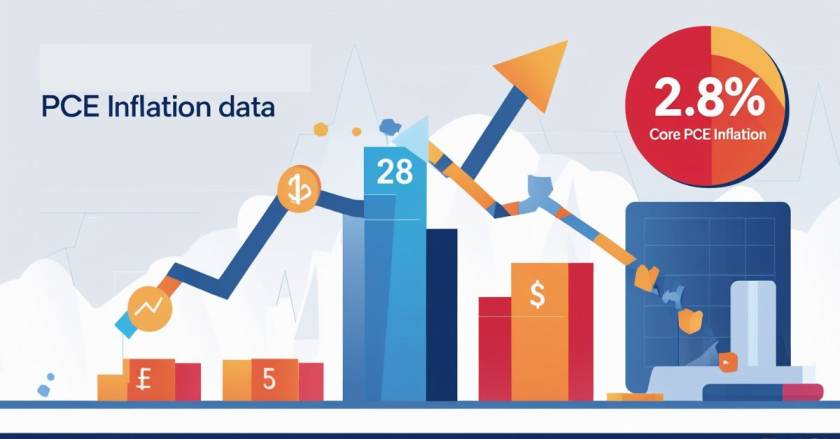Introduction The latest Personal Consumption Expenditures (PCE) report, released on March 28, 2025, highlights continued inflationary pressures in the U.S. economy. The PCE Inflation Data is closely watched by the Federal Reserve as it measures the price changes for goods and services purchased by consumers. This report provides key insights into core PCE inflation, PCE report trends, and the impact on financial markets.
February 2025 PCE Report Overview
According to the latest PCE data, the PCE Price Index increased by 0.3% in February, maintaining the same pace as January. On a year-over-year basis, PCE inflation rose by 2.5%, aligning with economists’ expectations.
The core PCE Price Index, which excludes volatile food and energy prices, showed a 0.4% monthly rise, marking the largest increase since January 2024. On an annual basis, core PCE inflation climbed to 2.8%, slightly exceeding the forecasted 2.7%.
Key Takeaways from the PCE Inflation Report
- Core PCE Inflation Remains High: At 2.8% annually, core inflation indicates continued pressure on consumer prices, affecting Federal Reserve policy decisions.
- Consumer Spending Rebound: February saw a 0.4% rise in consumer spending, following a revised 0.3% decline in January. Durable goods like motor vehicles and household appliances led the increase, while spending on services remained moderate at 0.2% growth.
- Federal Reserve’s Rate Strategy: The Fed’s benchmark interest rate remains in the 4.25%-4.50% range, with policymakers closely watching inflation trends before making further rate adjustments.
- Stock Market Reacts: The latest PCE report caused market volatility, with the Dow Jones down 1.3%, S&P 500 falling 1.5%, and Nasdaq Composite declining 1.9% as investors reacted to persistent inflation concerns.
Impact of PCE Inflation on Consumers & Investors
With inflation still above the Fed’s 2% target, consumers may face higher costs for goods and services in the coming months. Investors are also adjusting their strategies, anticipating potential delays in interest rate cuts due to sticky inflation trends.
What’s Next for Inflation & the Federal Reserve?
Economic analysts suggest that upcoming PCE reports and employment data will be crucial in determining whether inflation continues to cool down or remains elevated. The Federal Reserve’s next policy meeting will provide further insights into possible interest rate movements in response to the latest PCE inflation trends.
FAQs
1. What is PCE inflation, and why is it important? PCE inflation measures the price changes in goods and services purchased by U.S. consumers. It is the Federal Reserve’s preferred gauge for tracking inflation trends and making monetary policy decisions.
2. How does the PCE report affect interest rates? If core PCE inflation remains high, the Federal Reserve may delay interest rate cuts or even consider additional hikes to control inflation.
3. How does PCE inflation impact stock markets? Higher-than-expected PCE inflation data can lead to market volatility, as it affects investor sentiment regarding the Fed’s future rate decisions and overall economic growth.
Stay tuned for more updates on the PCE inflation report and its impact on the U.S. economy.
Read Also: How to Improve Credit Score Quickly 2025: A Step-by-Step Guide
